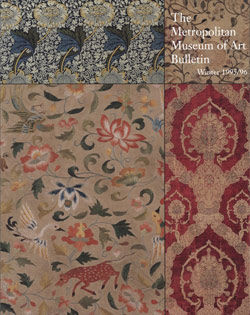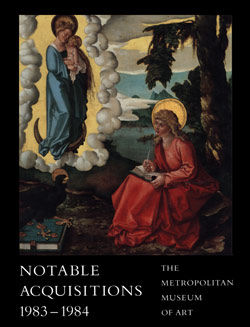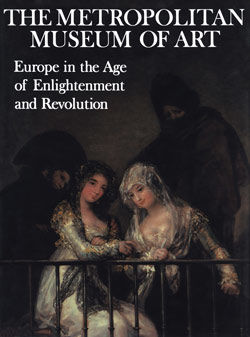Hunting and fishing scenes
Manufactured by Robert Jones
Not on view
This furnishing fabric shows fashionably dressed ladies and gentlemen leisurely pursuing the pastimes of hunting and fishing; it represents, both aesthetically and technically, the height of English textile printing in the eighteenth century. By 1761 Robert Jones had established his manufactory at Old Ford in the East End of London and had mastered the secret of colorfast copperplate printing on textiles, a process invented nine years earlier by Francis Nixon of Drumcondra, Ireland. The new technique allowed for much larger repeats and finer modeling of forms than could be achieved with traditional wood-block printing. This compensated for the fact that the complexity of the design and the restrictions of copperplate printing required that only one color be used.
In this tour de force Jones combined the best aspects of both processes and used each to full advantage. The vertical repeat of the pattern is exceptionally long, slightly more than eighty-one inches, and necessitated two separate copperplates. The principal elements of the design were first plate printed in aubergine. Additional colors were subsequently added by wood-block printing—a technique involving great skill and time to ensure that all impressions register properly—and penciling. It is not surprising, therefore, that only two other examples of this particular composition exist in public collections (Victoria and Albert Museum, London; Musée des Arts Décoratifs, Paris).
Although the designer of these scenes has not been identified, such stylishly adorned gentry sporting in a landscape replete with architectural ruins and towering trees frequently appear in contemporary English paintings and prints.
Due to rights restrictions, this image cannot be enlarged, viewed at full screen, or downloaded.




